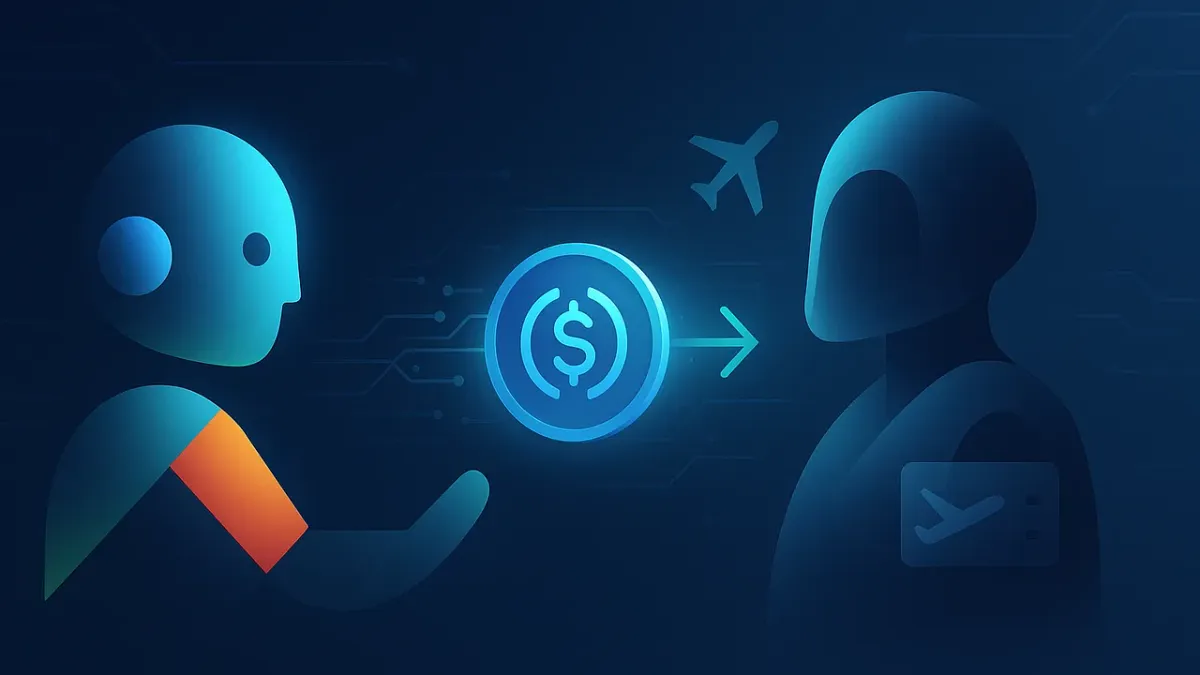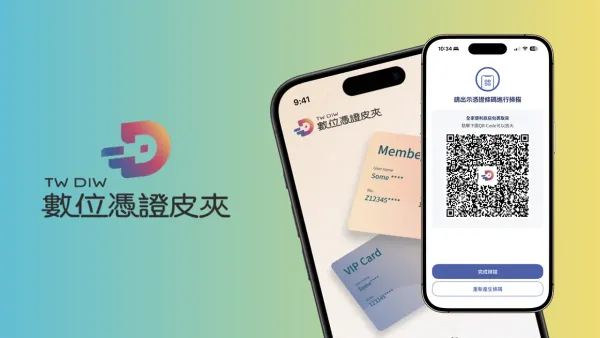The Payment Dysfunction of All-Purpose AI

GM,
AI can now do more and more, but there’s still one key capability it hasn’t unlocked: paying money.
Today’s AI systems are mostly built on the assumption that “public = free 1.” They scrape whatever online content 2 they can find and skip over anything behind a paywall. In the short run, this doesn’t affect users much. In the long run, though, it’s draining the internet. While we’ve grown accustomed to free content, things like buying plane tickets or booking hotels ultimately require payment. If AI had the ability to pay, its functionality would be far more powerful. That’s why everyone from credit card companies to crypto firms is actively building for the huge opportunity of “AI agent payments.” But enabling AI to pay is more complicated than it looks.

Before an AI agent can actually spend money, it first needs to know what services exist online, who can be trusted, and only then how to pay. This week, two major announcements happened that together form this chain:
- The Ethereum Foundation announced the creation of a decentralized AI team and introduced the ERC-8004 standard, which gives agents a verifiable identity.
- Google launched the Agent Payment Protocol (AP2) and integrated the x402 protocol 3, enabling AI to autonomously settle payments using stablecoins.
In this article, I’ll use planning a trip as an example to show how these new AI payment standards might soon fit into everyday life. I’ll also share my own family trip plans, while giving a heads-up about Blocktrend’s year-end break in November.
Honeymoon Trip
My wife and I go on a honeymoon trip every year. I enjoy booking flights and finding hotels, so I usually handle most of the planning. In recent years, I’ve also tried getting AI to help out, but it’s still far from the ideal experience.
In my imagination, I’d only need to tell AI something like:
Plan me a 10-day trip: fly from Taipei to Vienna, return from Prague, budget XX amount, stay at hotels with convenient transport, book a few local restaurants, and include must-see attractions.
The AI agent would then automatically search flights, compare hotels, book restaurants and tickets, and even check out on my behalf. By the time departure day arrives, we’d just grab our luggage and head to the airport—everything else already taken care of, like having a personal assistant. But with current AI capabilities, if I really handed over full control, we’d probably only find out at the airport that no flight tickets had actually been purchased.
At that point, I’d pull out the ChatGPT conversation logs as proof. They’d show it clearly promised me that once I said “OK,” it would place all the bookings for transport and restaurants on my behalf. As for why the airline never charged me after the booking—well, I wouldn’t know. Maybe it was AI subsidies…? If I tried giving that explanation, my wife would probably kill me. Anyone who has actually used AI for trip planning knows this is what happens when AI lies. In fact, the flights, restaurants, and hotels it shows you might just be hallucinations the AI made up entirely.

Why does this happen? The key issue is AI’s limited ability to access real-time information. Unlike humans who can search Google directly and get more complete, reliable results, AI often fails to retrieve accurate data. When it can’t find the information, it simply fabricates a “plausible-looking” answer—creating flights or restaurants that don’t exist. Even if it does find the right details, AI still hits a wall when trying to complete a booking: travel agencies can’t verify a passenger’s identity, let alone handle the payment step. In short, AI has the will but not the means. While it wants to accomplish tasks for me, the three essential elements of making a transaction don’t hold up: correct information, verified identity, and a payment method.
This week’s two technical standards announced by the Ethereum Foundation and Google aim to fill exactly these gaps—turning what AI wants to do into what it can actually achieve.
AI Autonomous Transactions
In April this year, Google released the A2A (Agent-to-Agent) communication standard. Think of it as a universal language for AI agents, enabling different AI systems to talk to each other. This is the crucial first step.
Correct Information
For AI to plan my trip, it first needs to know which airlines, travel agencies, and hotels are offering which services online. The current problem is that AI agents lack a shared language—each speaks its own dialect. On top of that, most businesses haven’t even launched their own AI agents to “receive” inquiries from user AIs. Google envisions a future where every online business not only has an official website but also an official AI agentdedicated to interacting with other AIs. These agents would present service options, packages, and price quotes to users’ AI assistants. That’s exactly the problem A2A is designed to solve. In the future, my AI agent could directly talk with the AI agents of Skyscanner, Agoda, and KKday, negotiating the flights, hotels, and activities for the trip.
Once flights, hotels, and activities are confirmed, AI can then actually execute the bookings through MCP (Model Context Protocol), introduced by Anthropic in 2024. In other words, A2A solves the problem of “communication and collaboration between agents,” while MCP solves the problem of “how AI uses tools.” Together, they enable AI to generate a complete list of airline tickets and accommodations based on accurate information—instead of hallucinating itineraries out of thin air.
But even with A2A and MCP, if I completely hand off the planning, my wife and I might still show up at the airport only to find we can’t board the plane. Why? Because my AI got scammed! It might have bought tickets from a shady “fake travel agency AI agent,” leaving us with nothing but counterfeit tickets. In other words, once communication is enabled, the next big question becomes: how do you verify whether an AI agent is genuine?
Verified Identity
This is why the Ethereum Foundation is pushing ERC-8004. Built on top of Google’s A2A communication protocol, ERC-8004 adds verifiable on-chain identity and a reputation system. Think of it like Google Maps reviews, except stored immutably on-chain.
A2A may allow agents to talk, but it naively assumes that every service-providing agent is authentic. On the open internet, however, anyone can impersonate an airline or travel agency.
ERC-8004 is designed to let service-provider AI agents present a kind of digital ID card, recording their origin and transaction history. For example, Skyscanner’s AI agent could show its on-chain identity, along with a verifiable record of past bookings. When my AI is choosing a partner, it can distinguish between legitimate providers and phishing scams. ERC-8004 addresses the question of “Who can I trust?”—the foundation of trust in the AI world.
Payment Method
But even if I fully delegate planning and avoid scams, I might still miss my flight—because my AI never actually paid! Payment is the final mile of completing a transaction.
So, how will AI agents pay?
- Credit card companies will tell you: AI will just swipe a card.
- Crypto firms argue: stablecoins are the natural choice for AI payments.
- Banks may eventually step in: AI will transfer money via online banking.
No one knows the definitive answer. That’s why this week, Google introduced the Agent Payment Protocol (AP2), which integrates credit cards, bank transfers, and cryptocurrencies into a single unified payment interface—so AI can choose the method on its own.
In the future, once my AI and Skyscanner’s AI have already negotiated the flights via A2A and confirmed identities through ERC-8004, the process will finally reach the payment stage. At that point, my AI can decide through AP2:
- If I have USDC in my wallet, it will use the x402 protocol for stablecoin payments.
- If I’ve linked a credit card, it can simply charge it.
- If I prefer bank transfers, it can wire the money directly.
The entire process requires no manual input from me—AI will complete the payment. AP2 is like abstracting away the list of ten different checkout methods you’d normally see at a cash register, leaving it to the AI agent to pick the most suitable one 4.
In theory, once the AI makes the payment, I should receive a booking confirmation email in my inbox. By the time I show up at the airport with my luggage, the chances of something going wrong should be much lower.
How Far Away Is AI Payment?
After finishing this piece, I actually feel that AI-powered payments are still a long way off. That’s because handling information and handling assets are two very different things. Right now, if AI provides the wrong information, many people might shrug it off. But if AI pays the wrong party and causes real financial loss, no one will be laughing.
At present, AI’s payment abilities are still stuck at the stage of merely “establishing a common language.” Even just finding counterparties online that can interact with AI is already difficult. Most of the online services people use every day still don’t offer their own AI agents to interface with users’ AI.
By the time AI can actually pay with real money, the first to profit may well be scammers. With phishing techniques evolving endlessly, AI payments could face the same stigma as cryptocurrencies—dismissed by the public as unsafe or fraudulent. Only when the scale of losses grows large enough to force government and regulatory intervention will these technologies be pushed from pure idealism toward safer, more reliable modes of operation.

I like the image above—it clearly illustrates the gap between ideal and reality. The more people pin their hopes on AI payments, the more likely it is that we’re simply still at the starting line. If you never set out, you won’t stumble, and it’s easy to mistake the road ahead as a smooth highway leading straight to the destination. In contrast, when we begin to see AI payments accumulate real-world failures—just like cryptocurrencies did—only then, after bubbles and corrections, will it have the chance to mature into a truly reliable assistant for things like planning my honeymoon trip.





